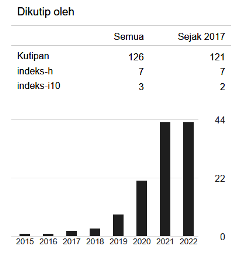Minoritas Muslim di Tibet
Abstract
This paper aims to discuss the history of the life of Muslim Minorities in the Tibetan region, where minority Muslims usually live in the midst of other communities whose majority are always oppressed. However, what is unique is that in Tibet they live peacefully and there are no major disputes between the native Buddhists and the Muslim minority immigrants, and they even unite to fight against the Chinese invaders. The method used in this study is a historical research method with data collection techniques through literature study. The formulation of the problem in this research is why the Muslim minority and the Buddhist majority can live peacefully and side by side in the Tibetan region. The results of this study are 1). The basic needs of many Tibetans come from the Middle East, the majority of whom are Muslims, therefore, in order to maintain good relations, they certainly do not want to cause new problems if the security of their Muslim brothers in Tibet is not guaranteed. 2) Muslims, on average, are community groups who were originally neighbors, and will continue to have good relations even though they have different beliefs. 3). Tibet is led by the Dalai Lama, who has always taught to respect each other, regardless of their religion 4). Both are victims of Chinese colonialism, so they feel the same fate and struggle.
Full Text:
PDFReferences
Abu Bakr Amir-Uddin, Nadwi. Tibbet aur Tibbati Musalman (Tibet and Tibetab Muslim). Lucknow: Nadwat ul Ulema, 1979.
Arif, Qazi. “Tracing the Genesis of Islam in Tibet.” Hazara Islamicus 3 No. 2 (2014).
Arnold, T.W. The Preaching of Islam. London: Constable & Company, 1913.
Chen, Jian. “The Tibetan Rebellion of 1959 and China’s Changing Relation with India and the Soviet Union.” Journal of Cold War Studies 8 No. 3 (2006).
Ibnu, Khaldun. Tarikh Ibn Khaldun. Beirut: Dar al-Fikri, 1988.
Marc, Gaborieau. “I am basing this tripartite breakdown of the Khache community.” Dalam The Encyclopedia of Islam, t.t.
———. Introduction to Récit D’un Voyageur Musulman Au Tibet by Khwajah Ghulam Muhammad. Paris: Labethno, 1973.
Melvin C., Goldstein. The Snow Lion and the Dalai. University of California Press, 1997.
Sayomukti, Nurani. Revolusi Tibet: Fakta, intrik, dan Politik Kepentingan Tibet-China-Amerika Serikat. Yogyakarta: Garasi, 2008.
Refbacks
- There are currently no refbacks.
Copyright (c) 2021 Turast : Jurnal Penelitian dan Pengabdian

This work is licensed under a Creative Commons Attribution-ShareAlike 4.0 International License.

This work is licensed under a Creative Commons Attribution-ShareAlike 4.0 International License
Turast: Jurnal Penelitian dan Pengabdian
Lembaga Penelitian dan Pengabdian (LPPM), Gedung Rektorat Lantai I
Kampus III Universitas Islam Negeri Imam Bonjol Padang - All rights reserved
Email: turast@uinib.ac.id



